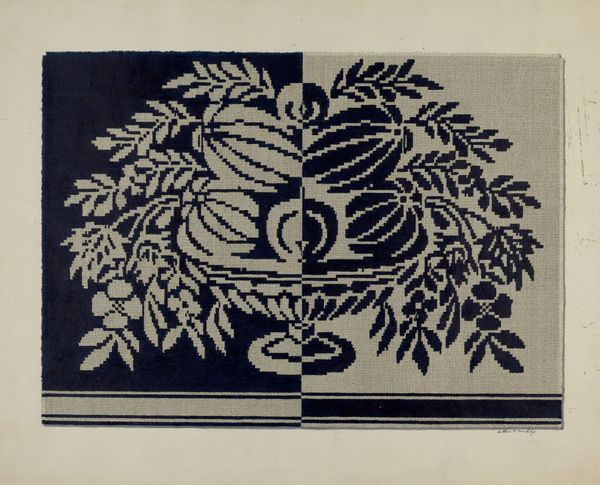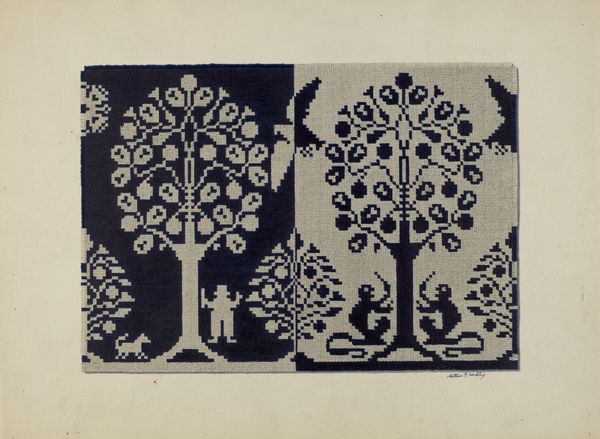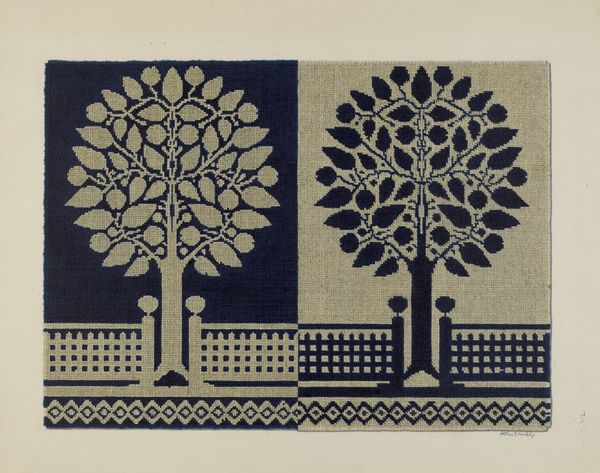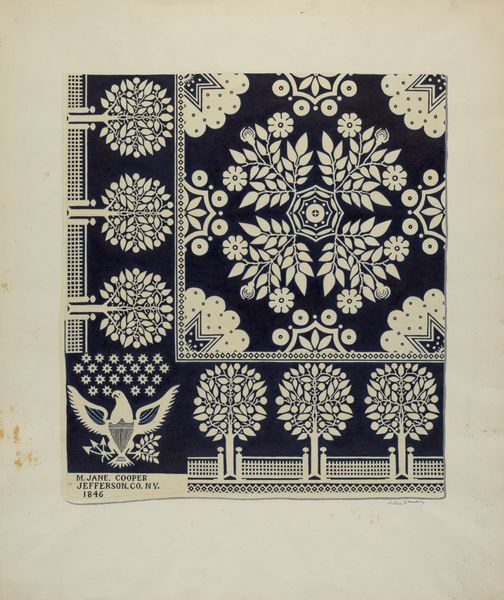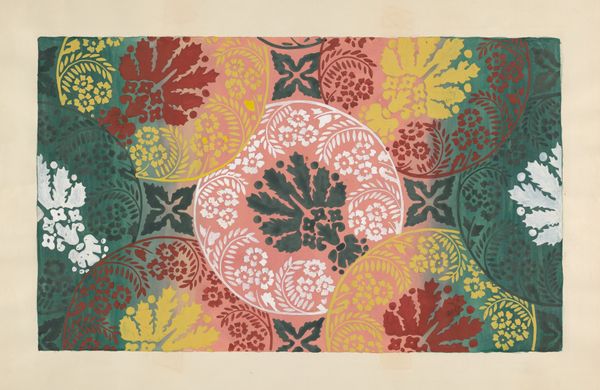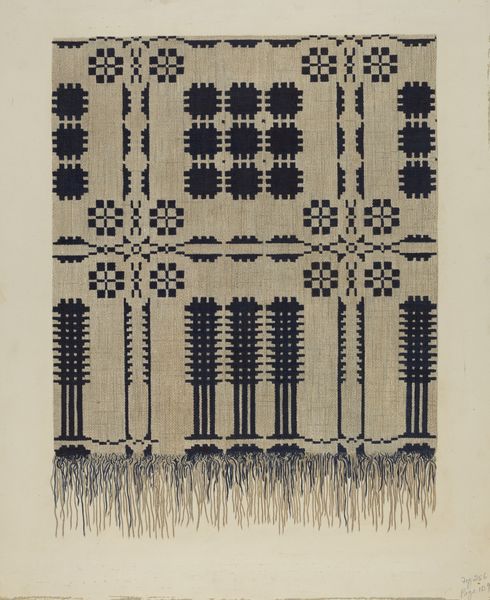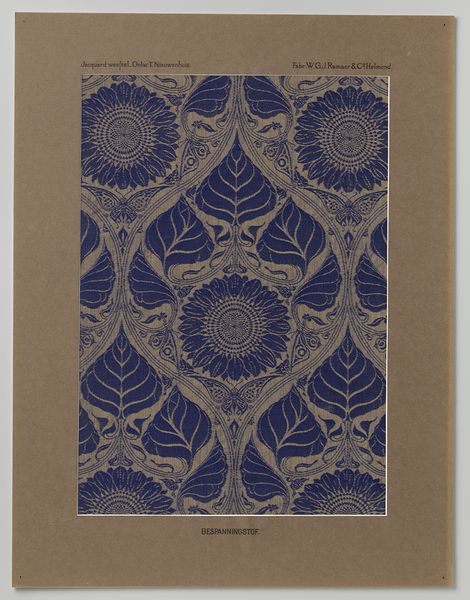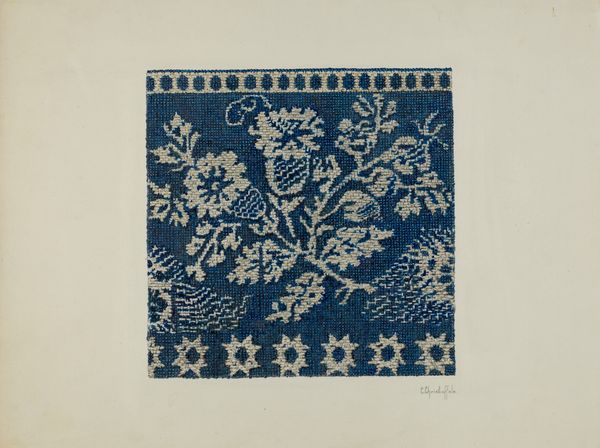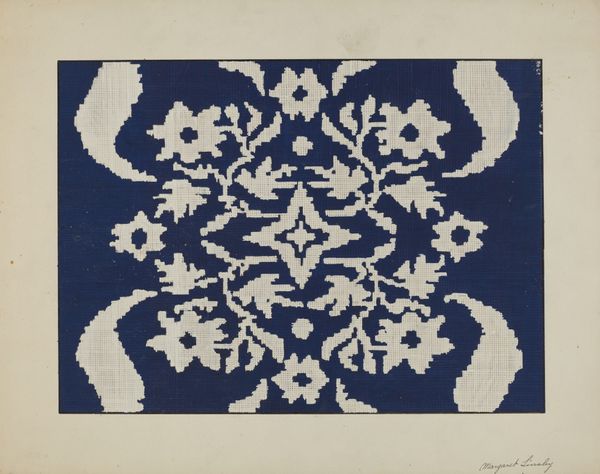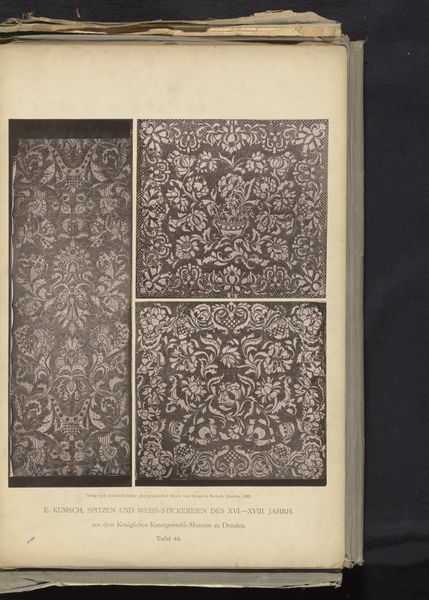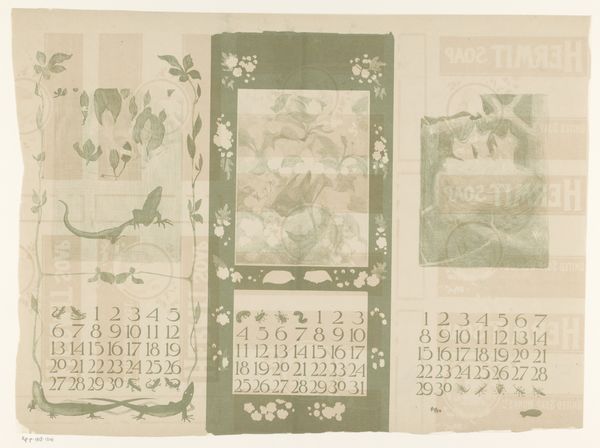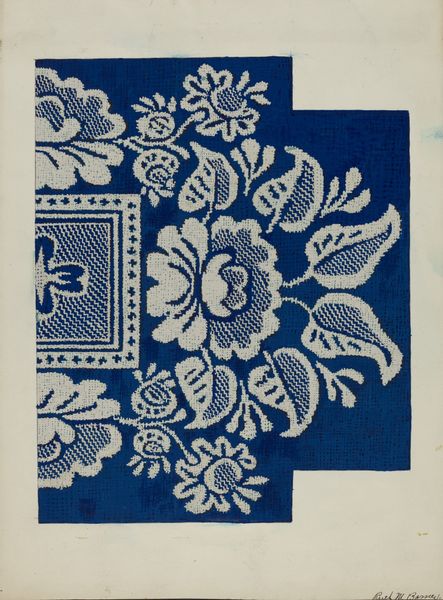
drawing, paper
#
drawing
#
decorative
#
paper
#
folk-art
#
geometric
#
decorative-art
#
decorative art
Dimensions: overall: 35.7 x 45.8 cm (14 1/16 x 18 1/16 in.)
Copyright: National Gallery of Art: CC0 1.0
Editor: Here we have the "Tyler Coverlet," made around 1941 by Arthur G. Merkley. It appears to be a drawing on paper, depicting a very symmetrical tree design. I find its almost pixelated look quite striking. What are your thoughts on this work? Curator: Well, looking at this, I'm immediately drawn to the materiality and the process implied. It's a drawing, but the grid-like structure and the title, "Coverlet," hint at weaving or embroidery. Do you see how this artwork challenges the traditional separation of art and craft? Editor: Absolutely, the pixelated form definitely points towards weaving. But how does its creation reflect its cultural context? Curator: Consider the 1940s, the likely point of creation: wartime austerity might drive resourcefulness. Merkley likely designed the coverlet so others could produce it, highlighting a democratizing element through its accessibility. Note too, it uses common, simple materials - paper, and presumably dye or paint - indicating local availability. This work then speaks to broader economic and social structures of its time, where perhaps making supplants buying. What's your take on that? Editor: That's a very good point. So the seemingly simple drawing actually reveals a complex relationship with labor, material constraints, and even potential collective work? Curator: Exactly! It bridges the gap between unique art object and mass production potential. Its aesthetic value isn't just in the image, but also in its engagement with making. Editor: This makes me rethink how I see "folk art." Thanks for opening my eyes to the layers beneath the surface! Curator: My pleasure. Analyzing art through a material lens uncovers narratives often missed by purely aesthetic interpretations.
Comments
No comments
Be the first to comment and join the conversation on the ultimate creative platform.
